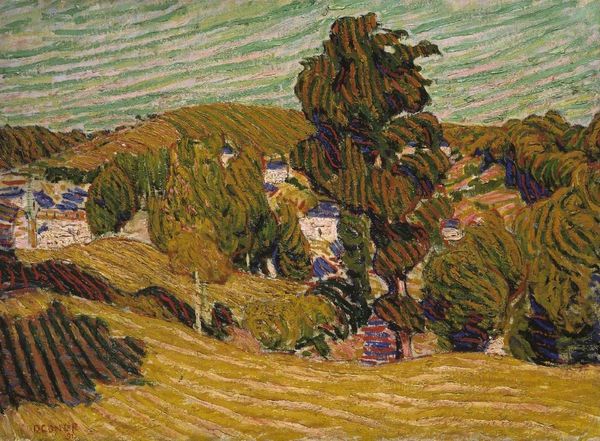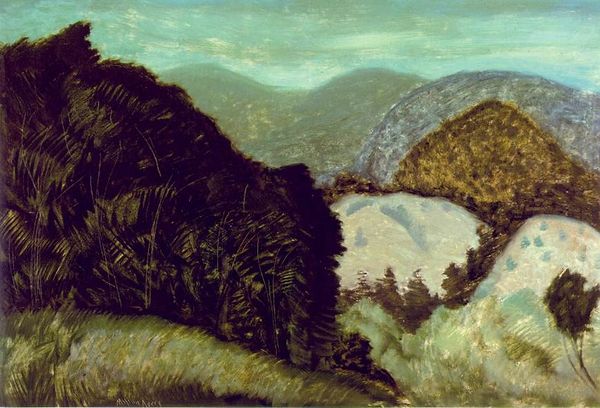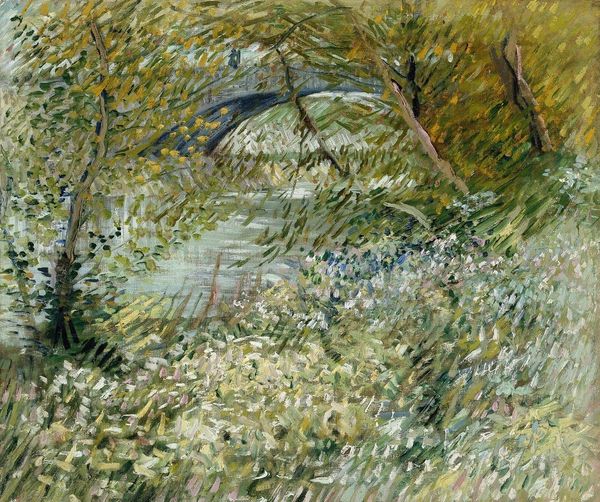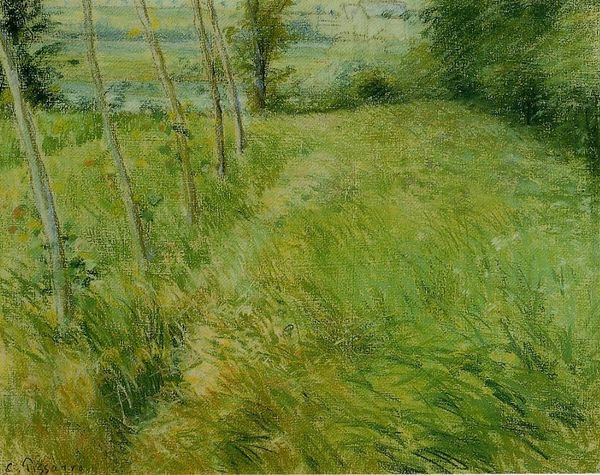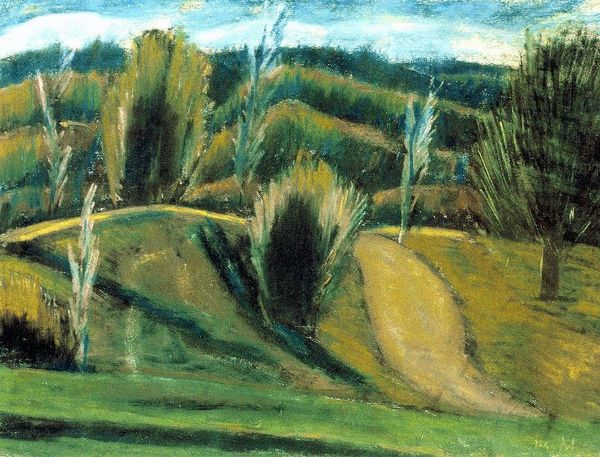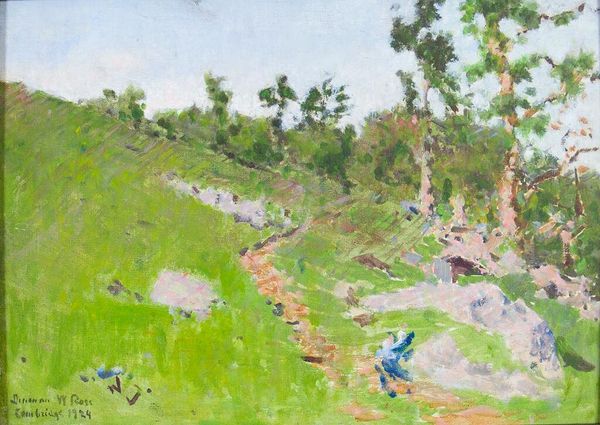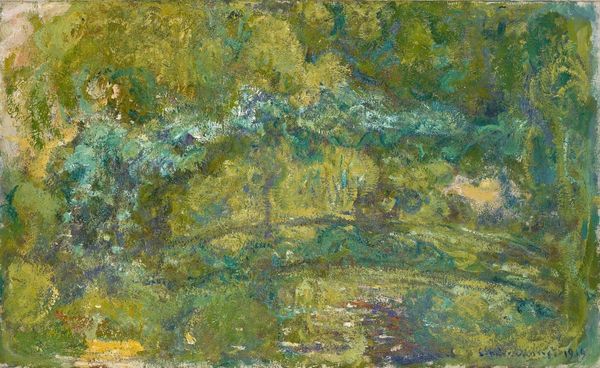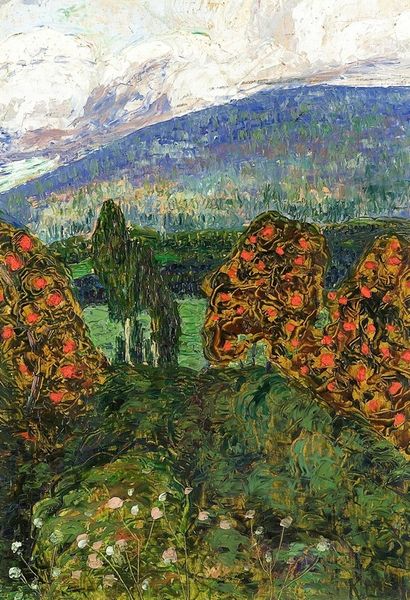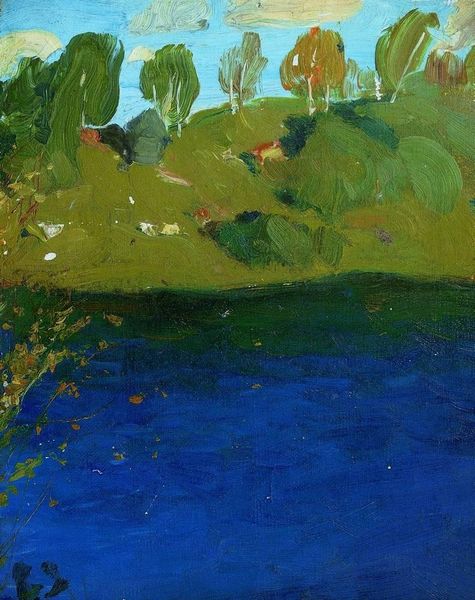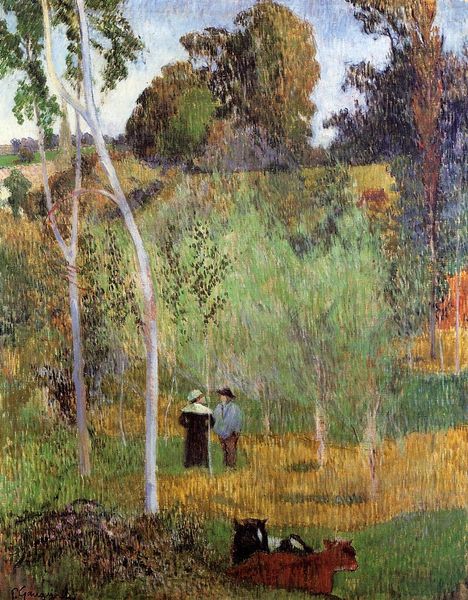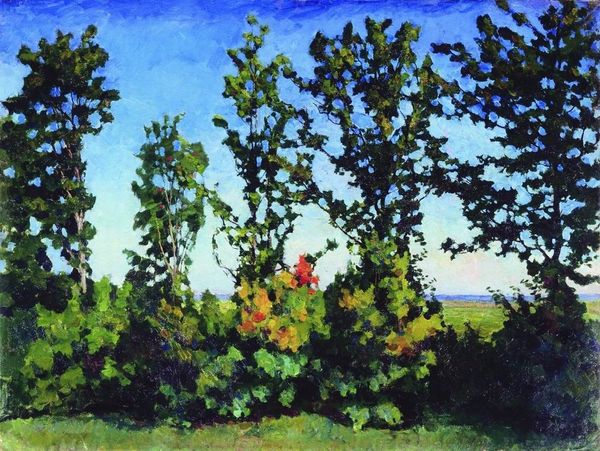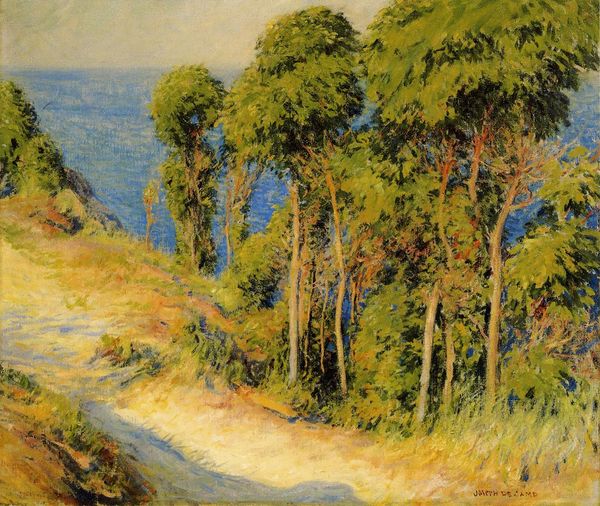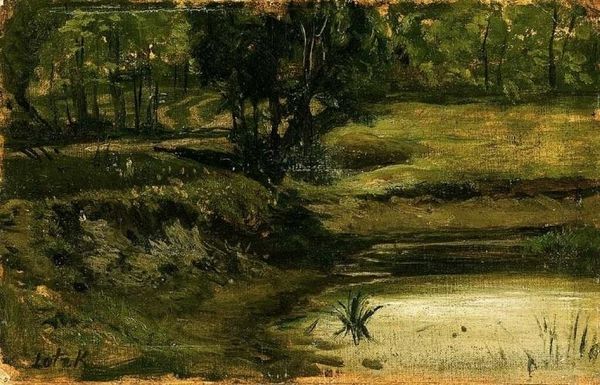
Copyright: Public domain
Curator: Immediately, the painting evokes a profound sense of isolation and movement, all contained within the still image. Editor: We're looking at Roderic O'Conor's "Pâturage Breton," painted in 1892. The artist was part of the Pont-Aven School, drawn to Brittany’s wild landscapes. O'Conor worked primarily in oils. Curator: Brittany holds such deep-rooted cultural symbolism. Its landscapes carry an aura of Celtic spirituality and connection to ancestral memory, quite remote. You feel that isolation in O’Conor's composition. Editor: The texture contributes heavily. Notice how O'Conor applies the oil paint in choppy, almost brutal strokes, especially visible in the foliage. It really fractures the light and renders the forms…vibrant and volatile, wouldn't you say? Curator: Yes, and this violence speaks to the turbulence in the landscape, almost as if it channels the anxieties of a changing society—a yearning for simpler times reflected in this pastoral scene, or perhaps a more anxious symbol of loss of place? The wind-swept trees seem almost anthropomorphic, reaching desperately towards the sky. Editor: The limited palette is key. The greens and blues dominate, creating a sense of cool detachment, but then those stark blacks in the grazing cattle inject visual drama. The composition’s strength lies in that very deliberate restriction. Curator: Black cattle too...in some old Irish lore, dark cows were associated with fairy folk. The contrast underscores the painting’s dual nature, the beauty on the surface with a shadow lurking beneath. Editor: Interesting connection! As a purely formal decision, it creates depth—pushes the trees into the background and grounds the immediate scene. The painting’s expressive, loose brushwork departs dramatically from traditional landscape painting. Curator: It asks us to reconsider our connection to landscape, not merely as observers, but as participants in a dynamic and complex story. It becomes almost a sacred text about the land. Editor: Perhaps… Or maybe a very deft and emotional arrangement of color and form. Ultimately, "Pâturage Breton" reveals O’Conor’s facility with expressive brushwork within a very restricted set of aesthetic choices.
Comments
No comments
Be the first to comment and join the conversation on the ultimate creative platform.
